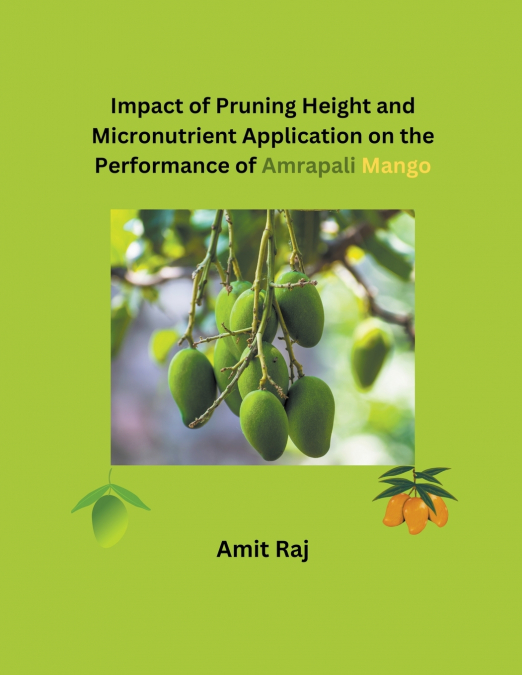
Amit Raj
Mango is one of the world’s most popular fruits. It originated from Indo-Burma (Myanmar) region. It holds a prominent position in fruit crops and has the largest area under fruit cultivation in India. It is a member of the Anacardiaceae family and the genus Mangifera. Mango fruits are put to various uses right from the initial stage of development to maturity and ripening. Indian mangoes are known for their delicious taste, excellent flavor, and attractive fragrance. It is a rich source of carbohydrates, sugars, fibers, protein, vitamins, and minerals, raw mango fruits are used mainly for chutney, pickles, and RTS beverages. The ripe fruit besides being used for dessert is also utilized for preparing several products like squash, syrup, nectar, jam, jelly, etc. (Mondal et al., 2018). India is the largest producer of mango (18 million tonnes) in the world but its productivity (7.2 MT/ha) is low as compared to other mango-growing countries like Indonesia (22..4), U.S (22.2), Brazil (16.1), Philippines (1.4.0), Italy (13.2), Turkey (12.8), and Mexico (12.6), whereas average world productivity of fruit is 21 t/ha (NHB, 2013). The primary causes of low productivity are old and senile orchards, low-yielding varieties, poor orchard management, and inadequate technology up-gradation and adoption by growers. Amrapali a hybrid between Dashehari and Neelum has very positive characteristics to be used in high density as it is a regular bearer and dwarfing nature. The mango plants grown under different high-density planting systems show a progressive decline in yield as well as fruit quality after 10-11 years of planting owing to overlapping/ intermingling of branches, poor light interception, low photosynthetic rate, and high relative humidity within the tree canopy. For improvement of fruit quality and yield potential of old and unproductive fruit orchards, rejuvenation pruning is highly recommended if trees are in healthy conditions. But mango rejuvenation alone could not overcome the problem. The height of the trees more than 30 years old becomes a limiting factor. Severe pruning i.e. beheading is needed to alter not only the physiology but also the biochemical behavior of these senile old mango trees. As a result, it is necessary to standardize the beheading height of old mango trees in order to avoid shading in the tree canopy skirts and adjacent rows. Shorter trees have more accessible canopies and are easier to harvest, prune and spray, requiring fewer labor inputs.